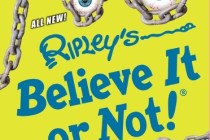Beginnings of basketball, football, soccer and more explored in new book
The rules are very simple: Don’t, don’t and don’t.
Don’t swing the bat too late. Don’t hug the ball while running down the court. Don’t get tackled. And whatever you do, don’t let the other guy win.
Rules are rules, and in sports, you have to follow them. But why are games played like that, with different balls and a field of certain size? “On the Origins of Sports,” by Gary Belsky and Neil Fine, explains those head-scratchers.
Get three sports fans together, and you’re all going to argue. Who’s the greatest dunker? Why are softballs bigger than baseballs? Are football helmets good enough? Wars, as Belsky & Fine point out, have been fought over lesser questions, so they took a look at the origins of our most popular games and sports.
Mythology says that Abner Doubleday created baseball, for instance, but the authors say that “forms of baseball were played on farms in New England” long before Doubleday’s day. Original baseball rules said that the first team to score 21 “aces” was the winner and, until 1952, only one or two umps were mandatory for regular season play.
Basketball was “pretty much created in a couple of weeks” by one man who was looking for an indoor game. James Naismith couldn’t find what he wanted so he made something up, including a rule that said a soccer ball was good enough for play. And did you ever wonder why basketball shorts are long?
There are many games called “football” but the American one, say the authors, is “unquestionably the most violent.” Maybe that’s why papier-mâché helmets were once banned. Also once banned: more than five people walking on the sidelines.
Hockey was created in Canada by British soldiers inspired by a Gaelic game. Golf and bowling were outlawed by kings. Soccer resembles a game played by the Chinese in 4 BC. No one’s ever bowled a perfect score in candlepin. Killing your opponent was once an acceptable way to win a wrestling match. And you’ll be surprised at which game is more popular than basketball.
Since even before you could walk, you’ve known that there were rules to live by. You’ve also come to understand that rules can change.
Confirmation is inside “On the Origins of Sports.”
Imagine baseball without gloves, football with thin leather helmets and monks playing tennis. Authors Belsky and Fine don’t have to imagine: They’ve pulled together the original rules for 21 specific sports and facts about dozens of others, in order to show how our favorite pastimes have become the games we know.
But pro sports aren’t all you’ll find here: Belsky and Fine also include rock-paper-scissors, poker, kickball, wiffleball and more. We see where the games likely started, how other countries play “our” games and how equipment differs between sports.
That’s almost as fun as playing the sports themselves, making this the perfect book for game-players and trivia fans ages 15 to adult.
“On the Origins of Sports” knocks it outta the park. Don’t miss it.
View publishes Terri Schlichenmeyer’s reviews of books for children weekly.
About the Book
"On the Origins of Sports" by Gary Belsky & Neil Fine
c.2016, Artisan, $19.95/$29.95 Canada, 256 pages























